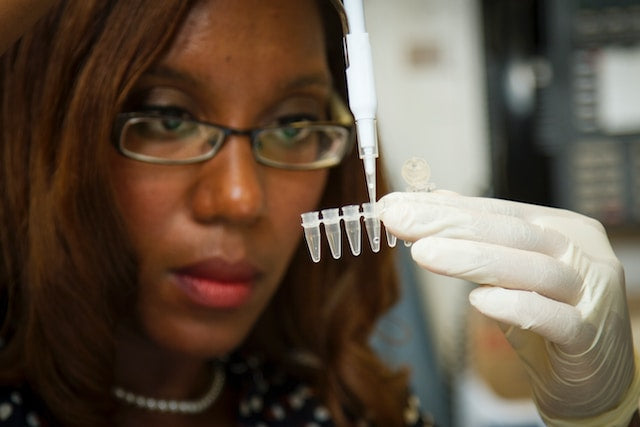Did you know that your vagina is significantly more sensitive and absorbent than your skin? It produces mucus that naturally protects it against potentially harmful microorganisms, but it also secretes and absorbs fluids more quickly—including whatever ingredients are in the feminine hygiene products you use every day.
These ingredients then go directly into your bloodstream, which is perfectly fine if what you're putting there is harmless. But the truth is, what you'll find in most of today's feminine sprays are often harmful chemicals.
According to a report conducted by the nonprofit Women's Voices for the Earth, feminine hygiene products—including feminine sprays—are likely to have harmful chemicals that either are known to cause cancer or allergic reactions or that are suspected endocrine-disrupting chemicals (EDCs), which at the very least can lead to hormonal imbalances.
With as many as 39% of women using feminine hygiene sprays—and with women spending an estimated $2 billion annually on feminine hygiene products—you'd think they'd be safe. But because feminine sprays in particular are labeled as cosmetics by the U.S. Food and Drug Administration (FDA), many of their ingredients remain unregulated—and therefore untested.
So what harmful chemicals are in these traditional feminine sprays? Let's take a look.
Harmful chemical #1: Parabens
Parabens are a common chemical used as preservatives in many cosmetics and feminine sprays, but they are a well-known irritant. Many parabens—including methylparaben, ethylparaben, propylparaben, butylparaben, and isobutylparaben—also contain formaldehyde, which can cause irritation and asthma. What's worse is that a Campaign for Safe Cosmetics report found that parabens can also disrupt hormone function, leading to an increased risk for reproductive toxicity and even cancer.
Harmful chemical #2: Fragrances
Fragrance is a blanket term used to describe anything with a scent, but most include diethyl phthalate, galaxolide, and benzethonium chloride. Synthetic fragrances can also contain hundreds of unspecified harmful chemicals, including polyethylene, polypropylene, and propylene glycol. These have all been linked to hormone disruption, fertility issues, birth defects, and cancer.
Harmful chemical #3: Synthetic surfactants
Sodium lauryl sulfate is one of the most common synthetic surfactants found in traditional feminine sprays and washes, but it's also an irritant. And while glycerin is a key ingredient in soap, it's also a synthetic surfactant that can irritate and even damage the vagina's cells, potentially increasing the risk for sexually transmitted diseases (STDs). Also, because soap's pH is alkaline and the vagina's pH is acidic, using soap found in feminine washes can lead to dryness and vaginal imbalances.
Choose natural feminine sprays
These are just a few of the many harmful chemicals that can be found in traditional feminine sprays. There's a list here of chemicals to avoid and a fact sheet here listing toxic ingredients in menstrual care products, but generally speaking, it's important to avoid products that contain any of the following chemicals in addition to the ones listed above:
- Methylchloroisothiazolinone
- Methylisothiazolinone
- Quaternium-15
- DMDM hydantoin
- Octoxynol-9
- Benzocaine
- D&C Red No.33
- Ext D&C Violet #2
- FD&C Yellow #5
Or, instead of searching for these ingredients, try a natural feminine spray derived from coconut oil, olive oil, and other natural ingredients. Your vagina will thank you!




